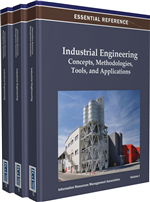Concurrent Engineering Best Practices

The project's aims were to identify the critical constraints with respect to global manufacturing, and to synthesise the best practices of concurrent engineering (CE) in a number of industrial sectors including automotive, aerospace, telecommunication, shipbuilding, and information technology. The importance of best practices. It is apparent from the survey that over the period of time Concurrent Engineering has been able to find place in academics also. Now it stands in the top ten best practices in academics. Result shows that in making the academics fascinating, Concurrent Engineering has played a vital role. Without CE it.
This article needs additional citations for. Unsourced material may be challenged and removed.

( December 2007) () Concurrent engineering ( CE) is a work methodology emphasizing the parallelisation of tasks (i.e. Performing tasks concurrently), which is sometimes called simultaneous engineering or integrated product development ( IPD) using an approach.
Best Practices In Teaching
It refers to an approach used in in which functions of design engineering, manufacturing engineering, and other functions are integrated to reduce the time required to bring a new product to market. Contents • • • • • • • • • • • Introduction [ ] A 2008 publication described concurrent engineering as a new design management system that has matured in recent years to become a well-defined systems approach to optimizing design and engineering cycles. Concurrent engineering has been implemented in a number of companies, organizations, and universities, most notably in the aerospace industry. Beginning in the early 1990s, CE was also adapted for use in the information and content automation field, providing a basis for organization and management of projects outside the physical product development sector for which it was originally designed. Organizations such as the 's make use of concurrent design to perform feasibility studies for future missions. The basic premise for concurrent engineering revolves around two concepts. The first is the idea that all elements of a product's life-cycle—from functionality, production, assembly, testing, maintenance, environmental impact, and finally disposal and recycling—should be taken into careful consideration in the early design phases.
Satu lagi game besutan First Touch yang keren punya. Berbeda dengan Dream League, Score! Hero lebih menekankan soal gameplay atau permainan. Ada beberapa fitur yang membuat game satu ini berbeda dibandingkan lainnya, namun yang paling menarik merupakan fitur membangun stadium dan membuat logo tim kamu sendiri untuk dipamerkan ke pemain lain secara online.. Kamu dapat mengendalikan semua pemain serta menggunakan taktik yang ada baik itu membagi pertahanan atau menendang bola pojok dengan sangat lihai.. Games sepak bola terbaik.
The second concept is that design activities should all be occurring at the same time, i.e., concurrently. The idea is that the concurrent nature of these activities significantly increases productivity and product quality. This way, errors and redesigns can be discovered early in the design process when the project is still flexible. Premiere pro titles free. By locating and fixing these issues early, the design team can avoid what often become costly errors as the project moves to more complicated computational models and eventually into the actual manufacturing of hardware.
As mentioned above, part of the design process is to ensure that the product's entire life cycle is taken into consideration. This includes establishing user requirements, propagating early conceptual designs, running computational models, creating physical prototypes, and eventually manufacturing the product. Included in this process is taking into full account funding, workforce capability, and time requirements. A 2006 study claimed that a correct implementation of the concurrent design process can save a significant amount of money, and that organizations have been moving to concurrent design for this reason. It is also highly compatible with. Concurrent engineering replaces the more traditional sequential design flow, or 'Waterfall Model'.
In Concurrent Engineering an iterative or integrated development method is used instead. The Waterfall method moves in a linear fashion, starting with user requirements and sequentially moving forward to design and implementation, until you have a finished product. In this design system, a design team would not quickly look backward or forward from the step it is on to fix or anticipate problems. In the case that something does go wrong, the design usually must be scrapped or heavily altered. The concurrent or iterative design process encourages prompt changes of tack, so that all aspects of the life cycle of the product are taken into account, allowing for a more evolutionary approach to design. The difference between the two design processes can be seen graphically in Figure 1.